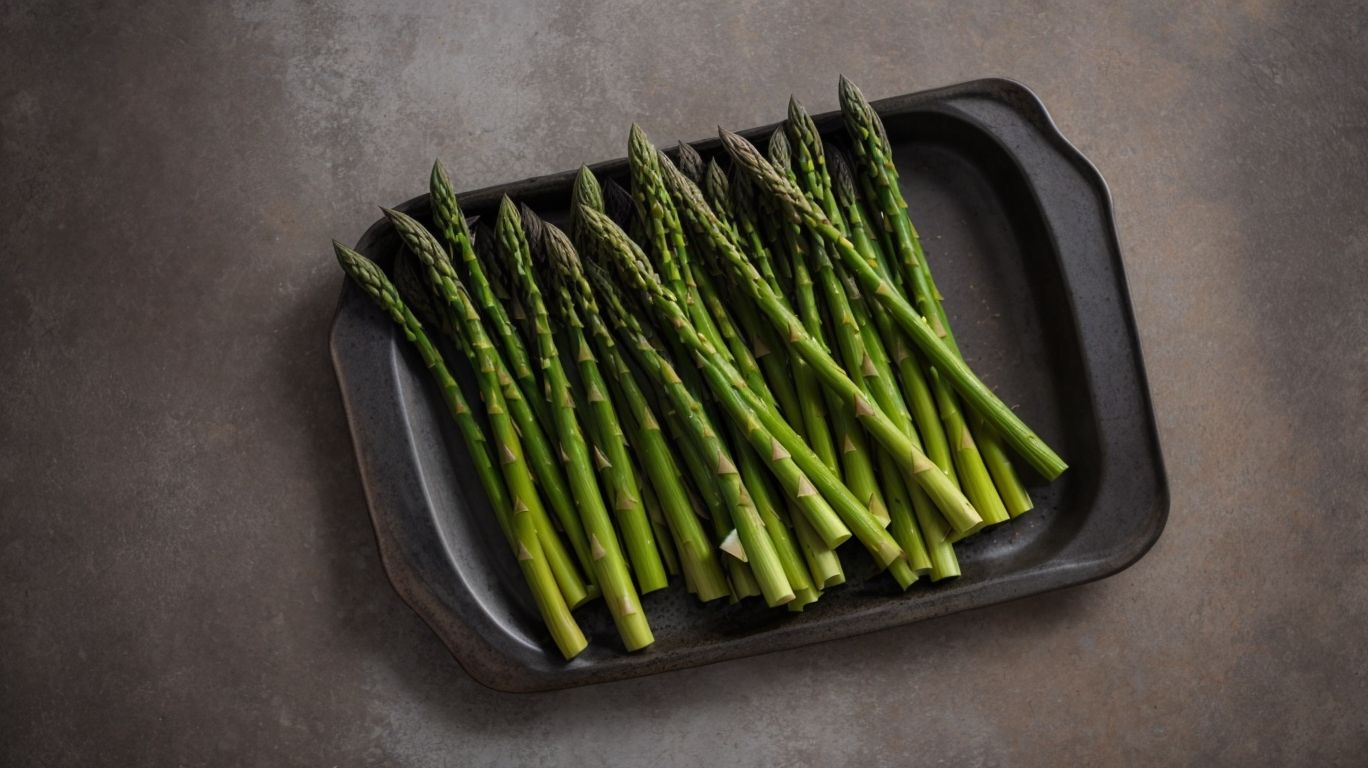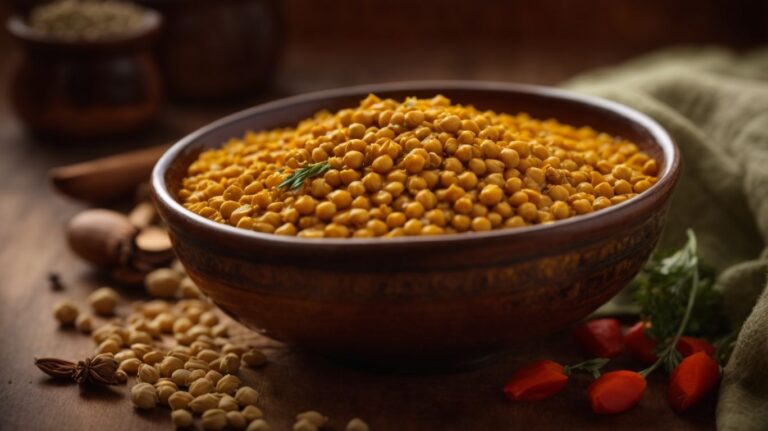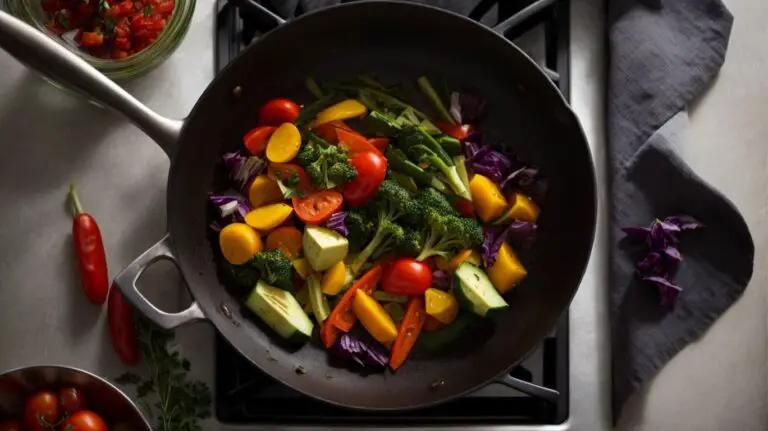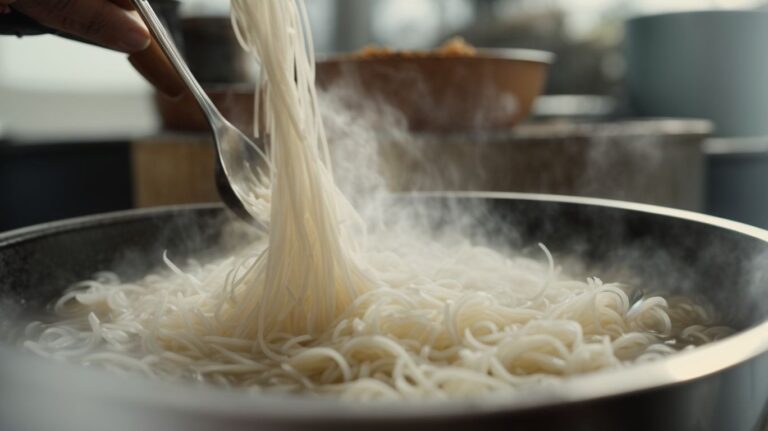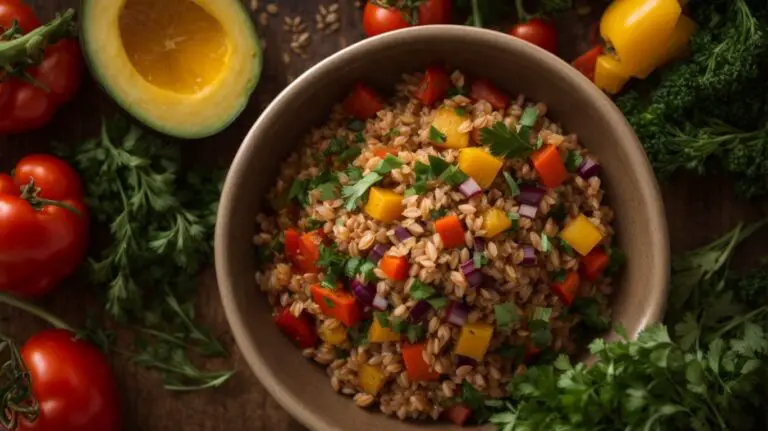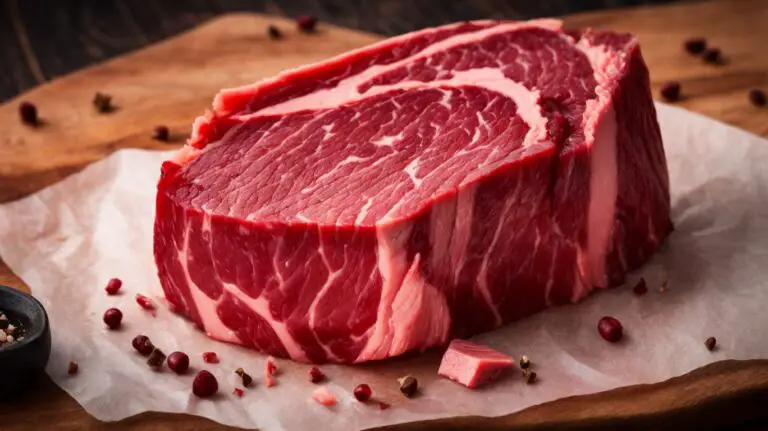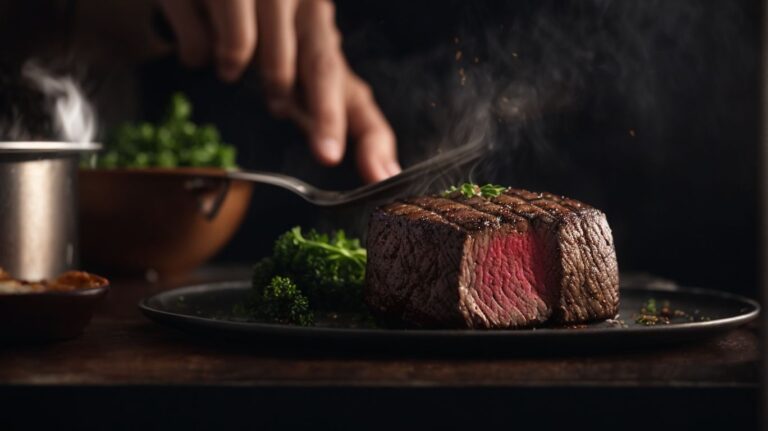How to Cook Asparagus on the Oven?
Asparagus is a versatile and delicious vegetable that can be prepared in a variety of ways. From choosing the right asparagus to cooking it to perfection, there are many tips and tricks to help you create a mouthwatering dish.
Explore the different methods for cooking asparagus, including roasting, grilling, and sautéing. Discover how to cook asparagus in the oven, with step-by-step instructions on prepping and seasoning the vegetable for optimal flavor.
Get ready with your asparagus and let’s start cooking!
Key Takeaways:
What is Asparagus?
Asparagus is a versatile vegetable with a unique flavor profile that is popular in various cuisines.
There are several varieties of asparagus, including the green, white, and purple ones, each with its distinct characteristics.
- Green asparagus is the most common type, known for its earthy and slightly nutty taste.
- White asparagus, on the other hand, is milder and less bitter due to being grown underground, shielded from sunlight.
- Purple asparagus is sweeter than the green variety and rich in antioxidants, giving it a vibrant appearance.
Asparagus is a nutritious powerhouse, packed with vitamins, minerals, and fiber, making it a great addition to a healthy diet.
Why is Asparagus a Popular Vegetable?
Asparagus is a popular vegetable due to its delicate flavor, nutritional value, and culinary versatility.
Its mild, slightly nutty taste appeals to a wide range of taste preferences, making it a favorite among both veggie lovers and picky eaters alike. For those focused on health, asparagus is a nutritional powerhouse, packed with essential vitamins, minerals, and antioxidants, such as vitamins A, C, and K, as well as folate and fiber. This nutrient density and low calorie content make it a go-to option for those watching their weight or aiming to maintain a balanced diet.
Culinary enthusiasts adore asparagus for its versatility; it can be grilled, roasted, steamed, sautéed, or even enjoyed raw in salads. Its slender shape and vibrant green color add visual appeal to dishes, making it a popular choice for garnishes and side dishes in upscale restaurants and home kitchens alike.
How to Choose the Right Asparagus?
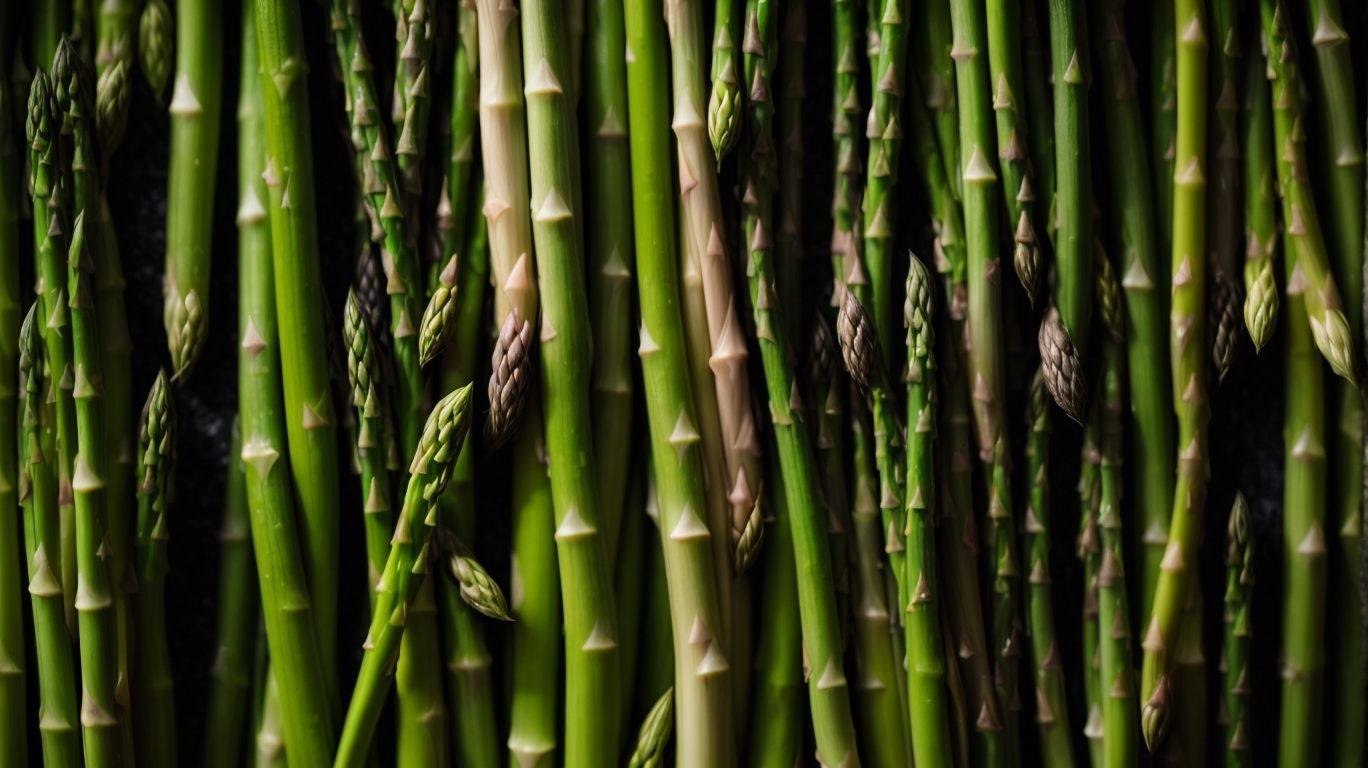
Credits: Poormet.Com – Ethan Rivera
Selecting the right asparagus involves considering factors such as freshness, appearance, and thickness.
When picking asparagus, opt for fresh, bright green stalks with tightly closed tips, indicating they were recently harvested and are still at peak flavor. Avoid any signs of wilting or yellowing, as these are indicators of aging. Seasonal availability is key – spring is the prime time for the freshest asparagus, although you can find them year-round in some locations. Thickness also matters; thinner spears are tender and cook quickly, while thicker ones have a more robust flavor and hold up better on the grill or in stir-fries.
What to Look for When Buying Asparagus?
When buying asparagus, look for firm stems, vibrant color, and closed tips to ensure freshness and quality.
Examine the stalks for any signs of shriveling or wilting, which could indicate aging or improper storage. Fresh asparagus should have a smooth texture, with no slimy or mushy spots, ensuring a crisp bite when cooked.
Another important aspect to consider is the thickness of the asparagus spears, with thinner ones being more tender and delicate, while thicker ones are meatier and better suited for grilling or roasting. Avoid any asparagus bunches that have a strong, unpleasant odor, as this could be a sign of spoilage.
How to Store Asparagus?
Properly store asparagus by trimming the ends, wrapping them in a damp cloth, and refrigerating them in an airtight container.
To maintain the freshness and flavor of asparagus, it is essential to follow these simple steps:
- After you’ve trimmed the ends of the asparagus, ensure that the damp cloth you use to wrap them is not soaking wet but just moist enough to provide adequate moisture.
- Placing the wrapped asparagus in an airtight container helps retain this moisture and keeps the asparagus crisp.
- Storing the asparagus in the refrigerator helps slow down the process of decay, ensuring that your asparagus stays fresh for longer periods of time.
Preparing Asparagus for Cooking
Preparing asparagus for cooking involves washing, trimming, and optionally peeling the spears to enhance their texture and taste.
Start by rinsing the asparagus under cold water to remove any dirt or debris from the spears. Next, you’ll want to trim off the woody ends of the asparagus, which can be tough and fibrous. A simple way to do this is by holding each spear near the bottom and bending it until it naturally snaps at the point where the tender part begins.
In terms of peeling, some cooks prefer to peel the bottom portion of the asparagus spears to ensure a consistent texture throughout. If you have fresh, young asparagus, peeling may not be necessary as the skin is tender and adds extra nutrients to your dish.
How to Wash and Trim Asparagus?
Wash asparagus under cold water, trim the woody ends, and peel if desired for a clean and tender result.
To properly wash asparagus, start by filling a bowl with cold water and gently swishing the spears to remove any dirt or residue. Next, using a sharp knife, carefully trim off the tough, woody ends, making sure to cut just above the point where the spear starts to become tender. If the asparagus stalks are on the thicker side, consider peeling them to ensure a consistent texture during cooking. This process helps remove the tough outer layer, revealing the tender inner flesh.
Should You Peel Asparagus?
Peeling asparagus is optional and depends on personal preference or the recipe requirements.
When considering whether to peel asparagus, it’s essential to contemplate several factors. One significant aspect is the texture – peeled asparagus tends to have a more delicate and refined texture compared to unpeeled ones, which can be preferred in certain dishes. Peeling can enhance the presentation of the dish, especially when aiming for a refined and elegant look.
Another consideration is the compatibility with different recipes. While some recipes may benefit from the clean and sleek appearance of peeled asparagus, others might work better with the natural crunchiness that the skin provides.
Methods for Cooking Asparagus
There are various methods for cooking asparagus, including roasting, grilling, and sautéing, each offering unique flavors and textures.
Roasting asparagus in the oven intensifies its natural sweetness and adds a delicious caramelized flavor with a slightly crispy exterior.
On the other hand, grilling imparts a smoky char that enhances the earthy notes of this vegetable, perfect for outdoor gatherings or barbecues.
Sautéing asparagus in a hot skillet with garlic and olive oil yields a quick and flavorful side dish that retains a slight crunchiness.
These different cooking techniques allow you to experiment with various seasonings, herbs, and spices to customize the taste according to your preferences.
Roasting Asparagus in the Oven
Roasting asparagus in the oven is a simple and flavorful method that brings out the natural sweetness of the vegetable.
When preparing oven-roasted asparagus, preheating the oven to around 400°F to 425°F is crucial for achieving that perfect tender-crisp texture. Asparagus spears should be arranged on a lined baking sheet in a single layer, ensuring even cooking. You can elevate the flavors by drizzling with olive oil, sprinkling with salt, pepper, and perhaps a touch of garlic powder. The cooking time typically ranges from 12 to 15 minutes, depending on the thickness of the spears, resulting in beautifully caramelized edges that intensify the vegetable’s taste.
Grilling Asparagus on the BBQ
Grilling asparagus on the BBQ imparts a smoky charred flavor that complements the vegetable’s natural earthiness.
Before grilling, it’s essential to prep the asparagus properly. Trim the tough ends, toss the spears in olive oil, and season with salt and pepper to enhance the flavors. You can also add a sprinkle of garlic powder or a squeeze of lemon juice for an extra kick.
When placing the asparagus on the grill, make sure to arrange them perpendicular to the grates to prevent them from falling through. Cooking times vary, but generally, grilling for about 3-5 minutes, turning occasionally, yields a perfect balance of char and tenderness.
Sauteing Asparagus on the Stove
Sautéing asparagus on the stove is a quick and versatile method that preserves the vegetable’s crisp texture and bright flavors.
To start the process, select a wide, heavy-bottomed pan that allows the asparagus to be spread out without overcrowding. Heat the pan over medium-high heat and add a high smoke point oil such as olive oil or avocado oil. Once the oil is shimmering, carefully add the prepared asparagus spears, making sure they are in a single layer. Season the asparagus with salt, pepper, and any additional herbs or spices of your choice.
How to Cook Asparagus in the Oven?
Cooking asparagus in the oven involves preheating, preparing, seasoning, and roasting the vegetable to perfection.
For starters, begin by preheating your oven to 400°F (200°C) to ensure that the asparagus cooks evenly and retains its vibrant color. Next, wash the asparagus spears under cold water, pat them dry with a paper towel, and trim off the woody ends. You can opt to season your asparagus with versatile ingredients like olive oil, salt, and pepper, or parmesan cheese and lemon zest for a burst of flavor.
Arrange the seasoned asparagus on a baking sheet in a single layer to allow even roasting. The spears should roast in the oven for around 12-15 minutes, depending on their thickness. To avoid overcooking, check for tenderness with a fork before removing from the oven.
Preheat the Oven
Preheating the oven is the first step in cooking asparagus to ensure even and efficient roasting.
Setting the oven at the correct temperature, typically around 400°F (200°C), allows the asparagus spears to caramelize and develop their rich flavors.
The process of preheating the oven for at least 10-15 minutes is crucial as it ensures that the asparagus cooks evenly from the moment it enters the oven. This initial blast of heat kick-starts the roasting process, resulting in tender yet slightly crispy asparagus.
Prepare the Asparagus
Preparing asparagus involves washing, trimming, and optionally seasoning the spears before roasting.
After washing the asparagus, using cold water and gently scrubbing under running water to remove any dirt or grit, the next step is trimming. Trimming can be done by snapping off the tough ends at the natural breaking point or by using a knife to cut them off.
For those who prefer a more refined appearance, peeling the lower part of the stalks can also be considered.
In terms of seasoning, a simple drizzle of olive oil, a sprinkle of salt, and a dash of pepper can bring out the natural flavors of the asparagus. Garlic, lemon zest, parmesan cheese, or balsamic vinegar are popular additions for enhancing the taste profile of this versatile vegetable.
Season the Asparagus
Seasoning asparagus with olive oil, salt, pepper, and herbs enhances its natural flavors and adds depth to the dish.
In terms of seasoning this versatile vegetable, the possibilities are endless. Consider trying out different flavor combinations like garlic and lemon for a zesty kick, or Parmesan and thyme for a savory twist. Herbs such as rosemary, tarragon, or parsley can elevate the taste profile of asparagus, bringing out its earthy notes.
Experimenting with seasoning techniques is also key. Roasting asparagus with a drizzle of balsamic glaze or grilling it with a sprinkle of smoked paprika can result in mouthwatering dishes. Alternatively, try sautéing asparagus with shallots and a squeeze of fresh citrus juice for a bright and refreshing flavor.
Roast the Asparagus in the Oven
Roasting asparagus in the oven at a high temperature caramelizes the edges and intensifies the vegetable’s natural sweetness.
Preheat your oven to 425°F (218°C) for optimal roasting temperatures. Toss the asparagus spears in olive oil, salt, and pepper to ensure even coating before spreading them out on a baking sheet.
During the roasting process, the edges of the asparagus will develop a delightful brown crust, adding a depth of flavor and contrast to the tender interior. The result is a perfect balance of crispiness and tenderness.
Depending on the thickness of the spears, roasting typically takes around 12-15 minutes. To enhance the browning effect, consider giving the asparagus a quick flip halfway through the cooking time for uniform color and flavor distribution.
Tips for Perfectly Cooked Asparagus
Achieving perfectly cooked asparagus involves timing, seasoning balance, and attentive monitoring to avoid overcooking.
To ensure your asparagus is perfectly cooked, start by selecting fresh, vibrant spears and trimming off the woody ends. For a tender crunch, steaming is a popular method that retains the vegetable’s natural flavor. An alternative approach is:
- roasting the asparagus in the oven tossed with olive oil, garlic, and a sprinkle of Parmesan cheese for added depth of flavor
- or grilling the spears over high heat to impart a smoky char that complements the vegetable beautifully.
Whatever method you choose, pay attention to the spears as they should be vibrant green when cooked and still have a slight snap when you bite into them. Once you master the art of cooking asparagus to perfection, it will become a versatile side dish that pairs well with a variety of main courses.
How to Tell if Asparagus is Cooked?
Determining if asparagus is cooked involves testing the spear’s tenderness with a fork or knife and assessing its vibrant color and aroma.
One effective way to ensure asparagus is cooked to perfection is to look for a slight bend in the spear when gently prodded. A crisp-tender texture is what you’re aiming for, where the asparagus offers a slight resistance to the touch but isn’t overly tough.
Another visual cue to keep an eye out for is the vibrant green color of the asparagus. A dull, muted hue might indicate overcooking, while a bright and lively green signals that it’s perfectly cooked.
Don’t underestimate the power of smell – a delicate, grassy aroma wafting from the asparagus signifies it’s done cooking.
How to Prevent Overcooking Asparagus?
Preventing overcooking of asparagus requires vigilant monitoring, timely removal from heat, and immediate cooling to preserve its texture and flavors.
A key strategy to avoid overcooking asparagus is to blanch it briefly in boiling water before proceeding with the final cooking method. This method not only helps maintain the vibrant green color of asparagus but also jump-starts the cooking process without risking overcooking. Consider using a steamer or griller for a more controlled cooking environment, allowing you to adjust the heat levels to prevent the asparagus from turning mushy or limp.
What are Some Flavor Combinations for Asparagus?
Experiment with flavor combinations for asparagus such as lemon and Parmesan, garlic and olive oil, or balsamic vinegar and red pepper flakes to enhance its taste.
Asparagus, with its delicate yet distinctive flavor, pairs beautifully with a myriad of ingredients to create a symphony of taste. For a refreshing twist, try combining asparagus with tangy feta cheese and cherry tomatoes, providing a burst of flavors in every bite. Another winning combination is wrapping asparagus in prosciutto, adding a savory richness that complements its earthy undertones.
Seasoning plays a crucial role in elevating asparagus dishes. A sprinkle of roasted sesame seeds adds a nutty depth, enhancing the vegetable’s natural sweetness. A drizzle of truffle oil lends a luxurious touch, transforming simple asparagus into a gourmet delight.
Frequently Asked Questions
How to Cook Asparagus on the Oven?
1. What ingredients do I need to cook asparagus on the oven?
– All you need is asparagus, olive oil, salt, and pepper. Optional ingredients include garlic, lemon, and parmesan cheese for added flavor.
2. What temperature should the oven be set to when cooking asparagus?
– Preheat your oven to 400 degrees Fahrenheit for the perfect roasted asparagus.
3. How long does it take to cook asparagus on the oven?
– It typically takes 12-15 minutes to cook asparagus in the oven, depending on the thickness of the stalks.
4. Do I need to preheat the baking sheet before cooking asparagus on it?
– Yes, it’s important to preheat your baking sheet before adding the asparagus to ensure even cooking.
5. Can I use aluminum foil to line the baking sheet?
– Yes, you can use aluminum foil for easy clean-up, but make sure to lightly coat it with oil to prevent the asparagus from sticking.
6. Can I use a different type of oil instead of olive oil?
– Yes, you can use other oils such as avocado oil or vegetable oil, but keep in mind that it may affect the flavor. Olive oil is recommended for its rich flavor and health benefits.

